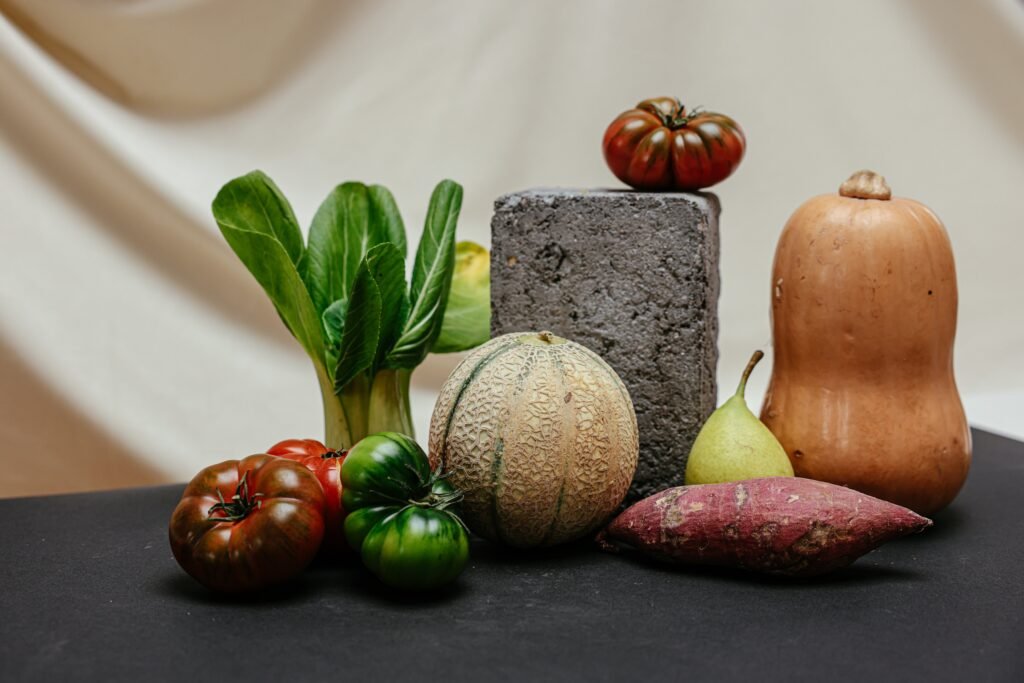
Eating gluten-free doesn’t have to be complicated or boring! In this article, we will provide you with essential gluten-free eating tips to make your journey enjoyable and stress-free. From learning how to read labels to finding delicious alternatives, we’ve got you covered. So get ready to embark on a new culinary adventure that will inspire you to discover a whole new world of gluten-free goodness!

This image is property of images.pexels.com.
Find more product like these on Amazon!
Understanding Gluten
What is gluten?
Gluten is a protein that is commonly found in grains such as wheat, barley, and rye. It gives dough its elasticity and helps it rise during baking. While gluten is harmless for most people, it can cause serious health issues for those with gluten-related disorders.
Why do some people need to follow a gluten-free diet?
Some individuals have medical conditions that require them to strictly follow a gluten-free diet. The most well-known condition is celiac disease, an autoimmune disorder where consuming gluten triggers an immune response that damages the lining of the small intestine. Other conditions include non-celiac gluten sensitivity, wheat allergy, and gluten ataxia.
Sources of gluten to avoid
To follow a gluten-free diet, it is crucial to identify and avoid sources of gluten. Foods that contain wheat, barley, rye, or any of their derivatives should be avoided. Common culprits include bread, pasta, baked goods, cereals, and beer. It’s important to carefully read food labels and be aware of potential hidden sources of gluten in processed foods.
Gluten-Free Food Options
Naturally gluten-free foods
There are many naturally gluten-free foods that can be enjoyed on a gluten-free diet. These include fruits, vegetables, meats, fish, eggs, dairy products, beans, legumes, nuts, and seeds. These whole, unprocessed foods are not only free from gluten but also provide essential nutrients.
Gluten-free grains and flours
For those who crave grains, there are several gluten-free options available. Some popular gluten-free grains and flours include rice, corn, quinoa, millet, buckwheat, and amaranth. These can be used to make gluten-free versions of bread, pasta, and baked goods.
Gluten-free substitutes and alternatives
Thanks to advances in gluten-free baking, there are now many gluten-free substitutes and alternatives on the market. Gluten-free flours, bread mixes, and baking mixes can help you create delicious gluten-free baked goods. Additionally, there are gluten-free pastas, crackers, and gluten-free versions of popular snacks available for those who miss these foods.
Reading Food Labels
Identifying gluten-containing ingredients
When following a gluten-free diet, it’s crucial to become familiar with ingredients that contain gluten. Some common ingredients to avoid include wheat, barley, rye, malt, and brewer’s yeast. However, gluten can also hide in less obvious forms, such as hydrolyzed vegetable protein (HVP), modified food starch, and soy sauce. Reading food labels diligently can help you spot and avoid these hidden sources of gluten.
Certified gluten-free labels
To ensure the product is safe for individuals with gluten-related disorders, look for items that have been certified gluten-free. These products have gone through rigorous testing and meet strict standards set by regulatory bodies. This label provides assurance that the product contains less than 20 parts per million (ppm) of gluten, which is considered safe for most people with celiac disease.
Cross-contamination concerns
Cross-contamination occurs when gluten-free foods come into contact with gluten-containing ingredients or surfaces. To minimize the risk, look for products labeled “gluten-free” specifically, as they are more likely to be produced in dedicated facilities. It’s also important to be cautious when using shared kitchen appliances or utensils. Additionally, when dining out, inquire about the restaurant’s cross-contamination prevention practices.
Eating Out
Choose gluten-free friendly restaurants
When dining out, it’s important to choose restaurants that cater to gluten-free needs. Seek out establishments that have gluten-free options prominently listed on their menus or are known for accommodating special dietary needs. Many restaurants now have separate gluten-free menus or symbols indicating gluten-free items.
Communicate your dietary needs
Once you’ve chosen a restaurant, communicate your dietary needs to the server or staff. Clearly explain that you require a gluten-free meal and ask about their gluten-free preparation practices. Depending on your condition, it may also be necessary to avoid cross-contamination with gluten-containing ingredients during the cooking process.
Ask about gluten-free options and preparations
When ordering, don’t hesitate to ask questions about specific menu items and their ingredients. Inquire about gluten-free substitutions or modifications that can be made. By proactively asking for gluten-free options, you can ensure you make informed choices that fit within your dietary restrictions.

This image is property of images.pexels.com.
Meal Planning and Preparation
Create a well-balanced gluten-free meal plan
Meal planning is essential for maintaining a gluten-free diet. Aim to create well-rounded meals that include a variety of fruits, vegetables, lean proteins, and gluten-free grains. This will help ensure you meet your nutritional needs and prevent boredom with your gluten-free meals. Explore new recipes and experiment with different flavors to keep your taste buds excited.
Stock gluten-free pantry staples
To successfully prepare gluten-free meals at home, it’s important to have a well-stocked pantry. Gluten-free pantry staples can include gluten-free grains like rice and quinoa, gluten-free flours such as almond flour or coconut flour, gluten-free pastas, gluten-free bread, and gluten-free baking essentials like xanthan gum or gluten-free baking powder. By having these items on hand, you can easily whip up delicious gluten-free meals.
Meal prepping for convenience
Meal prepping can be a game-changer when following a gluten-free diet. By preparing meals in advance and portioning them into containers, you can ensure you always have a gluten-free option available. This can save time, reduce stress, and make it easier to stick to your gluten-free eating plan, especially on busy days when time is limited.
Navigating Social Gatherings
Inform hosts about your dietary restrictions
When attending social gatherings, it’s important to inform the host about your dietary restrictions ahead of time. This allows them to plan accordingly and make accommodations for you. Offer to bring a gluten-free dish to share, but be mindful of potential cross-contamination in the kitchen. Be polite and grateful for any efforts made to accommodate your needs.
Bring gluten-free dishes to share
Bringing your own gluten-free dish to share at social gatherings ensures that you have something safe to eat. Opt for crowd-pleasing recipes that highlight the deliciousness of gluten-free ingredients. Sharing your culinary skills and educating others about gluten-free options can be a great way to spread awareness and make others feel included.
Safely enjoying parties and events
While attending parties and events, it’s important to navigate the food options with caution. Avoid dishes that seem suspicious or have unidentified ingredients. Opt for fresh fruits and vegetables or choose items that are clearly marked gluten-free. Be aware of possible cross-contamination at buffets or shared serving utensils. With a bit of mindfulness, you can safely enjoy social gatherings while sticking to your gluten-free diet.

This image is property of images.pexels.com.
Traveling Gluten-Free
Research gluten-free dining options in advance
When traveling, it’s beneficial to do some research beforehand to identify gluten-free dining options. Look for restaurants that have gluten-free menus or establishments that have been recommended by fellow gluten-free travelers. Utilize online resources, travel apps, and local recommendations to find safe and enjoyable gluten-free meals while exploring new places.
Pack gluten-free snacks
To ensure you have gluten-free options on hand while traveling, pack a variety of gluten-free snacks. This can include individual packs of nuts, trail mix, gluten-free granola bars, or dried fruit. Having portable snacks readily available can save you from the frustration of not finding suitable food options during your journey.
Language cards for communicating gluten-free needs
If you are traveling to a country where English may not be widely spoken, consider carrying language cards that explain your gluten-free dietary needs. These cards can be handed to waitstaff or chefs to help them understand your restrictions. There are many online resources available that provide pre-made language cards for various dietary needs.
Maintaining a Nutritious Diet
Balancing macronutrients
A gluten-free diet, like any other diet, should focus on balancing macronutrients. Include adequate amounts of protein, carbohydrates, and healthy fats in your meals to ensure you receive all the essential nutrients your body needs. Lean meats, fish, beans, dairy products, and gluten-free grains are excellent sources of macronutrients in a gluten-free diet.
Meeting nutrient needs on a gluten-free diet
When following a gluten-free diet, it’s important to pay attention to nutrient intake, as some essential nutrients can be lacking. Incorporate sources of iron, calcium, B vitamins, and fiber into your meals. Foods like leafy greens, fortified gluten-free products, and naturally gluten-free grains can help you meet your nutrient needs.
Supplementing if necessary
For some individuals on a gluten-free diet, certain deficiencies may be difficult to overcome through diet alone. If you are unable to meet your nutrient needs through food, consult with a healthcare professional who can assess your specific requirements and recommend appropriate supplements. It’s important to work with a professional to ensure you are getting the right supplements in safe and effective doses.
Dealing with Gluten Cross-Reactivity
Understanding cross-reactive foods
Some individuals with gluten-related disorders may experience cross-reactivity. Cross-reactivity occurs when the body reacts to proteins in foods that are structurally similar to gluten. Common cross-reactive foods include dairy products, oats, coffee, and certain grains such as corn and rice. If you suspect cross-reactivity, it may be necessary to eliminate these foods temporarily to assess their impact on your symptoms.
Elimination and reintroduction techniques
To determine if cross-reactive foods are triggering symptoms, an elimination and reintroduction technique can be helpful. Eliminate potentially cross-reactive foods from your diet for a period of time, typically 2-4 weeks. Then, gradually reintroduce them one at a time, observing any changes in symptoms. It’s important to keep a food diary during this process to track your reactions accurately.
Working with a healthcare professional
If you suspect cross-reactivity or have concerns about your gluten-free diet, it’s essential to work with a healthcare professional. They can provide guidance, order relevant tests, and help you navigate the complexities of managing your specific condition. With their expertise and support, you can find the best approach to managing cross-reactivity and ensure optimal health.
Seeking Support and Resources
Joining gluten-free support groups
Support groups can be a valuable resource for individuals following a gluten-free diet. These groups provide a sense of community, a platform to share experiences, and an opportunity to learn from others. Join local or online support groups to connect with individuals who understand the challenges and triumphs of living gluten-free.
Online resources and forums
The internet offers a wealth of information and resources for those on a gluten-free diet. Explore reputable websites, blogs, and forums dedicated to gluten-free living. These platforms provide recipes, tips, product recommendations, and the latest research on gluten-related disorders. Be cautious and double-check information from reliable sources to ensure accuracy.
Cookbooks and recipe websites
There is no shortage of gluten-free cookbooks and recipe websites available to provide inspiration for your gluten-free meals. From traditional favorites to innovative creations, these resources offer a wide variety of gluten-free recipes. Look for cookbooks and websites that focus on healthy, whole-food recipes to ensure you’re maintaining a nutritious and balanced diet.
In conclusion, understanding gluten and following a gluten-free diet can be a challenge, but with knowledge and resources, it becomes more manageable. By familiarizing yourself with gluten-free options, reading food labels carefully, and taking necessary precautions when dining out or attending social gatherings, you can successfully navigate a gluten-free lifestyle. Remember to seek support from others who share your journey and consult with healthcare professionals when needed. With the right information and support, a gluten-free diet can be both delicious and nutritious.

